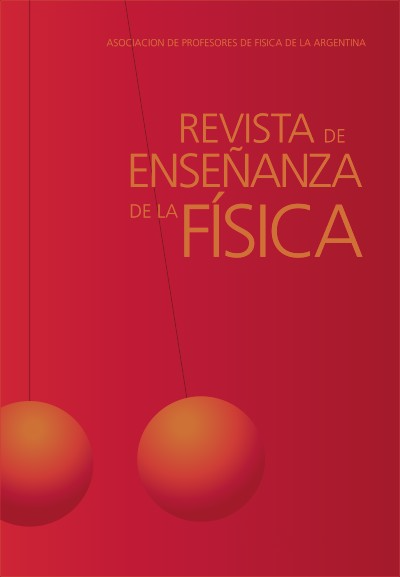Dubbing for educational purposes: a possibility of using the YouTube social network for science teaching
DOI:
https://doi.org/10.55767/2451.6007.v34.n1.37948Keywords:
Science teaching, Educational videoAbstract
The objective of this article is to present dubbing as a tool for the production of multimedia content for science teaching, as well as to validate an educational video about physics dubbed in this project. The research was carried out between January 2019 and January 2021, with the following steps: search for educational videos about physics on YouTube channels in English, classification of videos by an expert, contact with channel owners to request permission to use the videos, dubbing of videos, validation of dubbed videos by teachers and high school students. For validation, a five-point Likert scale was used, been considerate validated only items with a Content Validity Index (CVI) greater than 0.78. The dubbed educational video was approved with a global CVI of 0.910 by teachers and 0.858 by students, covering both technical and educational aspects. Thus, the methodology developed throughout the project has proven to be effective for the selection and dubbing of educational videos.
References
AAA Inovação, Ranking dos sites mais visitados no Brasil e no Mundo. Recuperado de https://blog.aaainovacao.com.br/sites-visitados-brasil-mundo/
Barak M., Ashkar T., Dori Y. J. (2011). Learning science via animated movies: Its effect on students’ thinking and motivation. Computers & Education, 56(3), 839-846.
Borges, S. M. L., Leite, A. E. (2020). Contribuições das redes sociais da internet para o ensino de ciências. #Tear: Revista de Educação, Ciência e Tecnologia, 9(2), 1-17.
Canaltech, Como o YouTube se tornou uma verdadeira sala de aula. Recuperado de https://canaltech.com.br/educacao/dia-da-educacao-como-o-youtube-se-tornou-uma-verdadeira-sala-de-aula-183485/
Costa A. N. M, Orpinelli C. M. Z. (2011). Validade de conteúdo nos processos de construção e adaptação de instrumentos de medidas. Ciência & Saúde Coletiva, 16, 3061-3068.
Croasmun, J. , Ostrom, L. (2011). Using Likert-Type Scales in the Social Sciences. Journal of Adult Education, 40(1), 19-22.
Gomes Silva Filho, P. R. & Galluzzi, M. L. (2021). A utilização de redes sociais para a divulgação científica e ensino de Astronomia. Revista de Enseñanza de la Física, 33(2), 259–265. Recuperado de https://revistas.unc.edu.ar/index.php/revistaEF/article/view/35219
Internet World Stats - Usage and Population Statistics, Top ten Internet languages in the World - Internet Statistics. Recuperado de https://www.internetworldstats.com/stats7.htm
Liberatore, M. W., Marr, D. W. M., Herring, A. M. & Way, J. D. (2013). Student-Created Homework Problems Based on YouTube Videos. Chemical Engineering Education, 47(2), 122-132.
Loures Integration - Dados & Insights, Como a pandemia transformou nossos hábitos digitais? Recuperado de https://www.loures.com.br/portfolio_page/ebook-habitos-pandemia/
Pecay, R. D. (2017). YouTube Integration in Science Classes: Understanding Its Roots, Ways, and Selection Criteria. The Qualitative Report, 22(4), 1015-1030.
Pereira M. V., Barros S. S., Rezende L. A. C., Fauth L. H. A. (2012). Audiovisual physics reports: students' video production as a strategy for the didactic laboratory. Physics Education, 47, 44-51.
Polit D. F., Beck C. T. (2006) The content validity index: Are you sure you know what's being reported? critique and recommendations. Res. Nurs. Health, 29, 489-497.
Shiu, A., Chow, J. & Watson, J. (2020). The effectiveness of animated video and written text resources for learning microeconomics: A laboratory experiment. Educ Inf Technol, 25, 1999–2022.
Similarweb, Top Websites Ranking for all categories in Argentina. Recuperado de https://www.similarweb.com/top-websites/argentina/
Published
How to Cite
Issue
Section
License

This work is licensed under a Creative Commons Attribution-NonCommercial-NoDerivatives 4.0 International License.
Aquellos autores/as que tengan publicaciones con esta revista, aceptan los términos siguientes:Los autores/as conservarán sus derechos de copiar y redistribuir el material, bajo los términos estipulados en la Licencia de reconocimiento, no comercial, sin obras derivadas de Creative Commons que permite a terceros compartir la obra bajo las siguientes condiciones:
- Reconocimiento — Debe reconocer adecuadamente la autoría, proporcionar un enlace a la licencia e indicar si se han realizado cambios. Puede hacerlo de cualquier manera razonable, pero no de una manera que sugiera que tiene el apoyo del licenciador o lo recibe por el uso que hace.
- NoComercial — No puede utilizar el material para una finalidad comercial.
- SinObraDerivada — Si remezcla, transforma o crea a partir del material, no puede difundir el material modificado.
- Los autores/as podrán adoptar otros acuerdos de licencia no exclusiva de distribución de la versión de la obra publicada (p. ej.: depositarla en un archivo telemático institucional o publicarla en un volumen monográfico) siempre que se indique la publicación inicial en esta revista.
- Se permite y recomienda a los autores/as difundir su obra a través de Internet (p. ej.: en archivos telemáticos institucionales o en su página web) antes y durante el proceso de envío, lo cual puede producir intercambios interesantes y aumentar las citas de la obra publicada. (Véase El efecto del acceso abierto).














